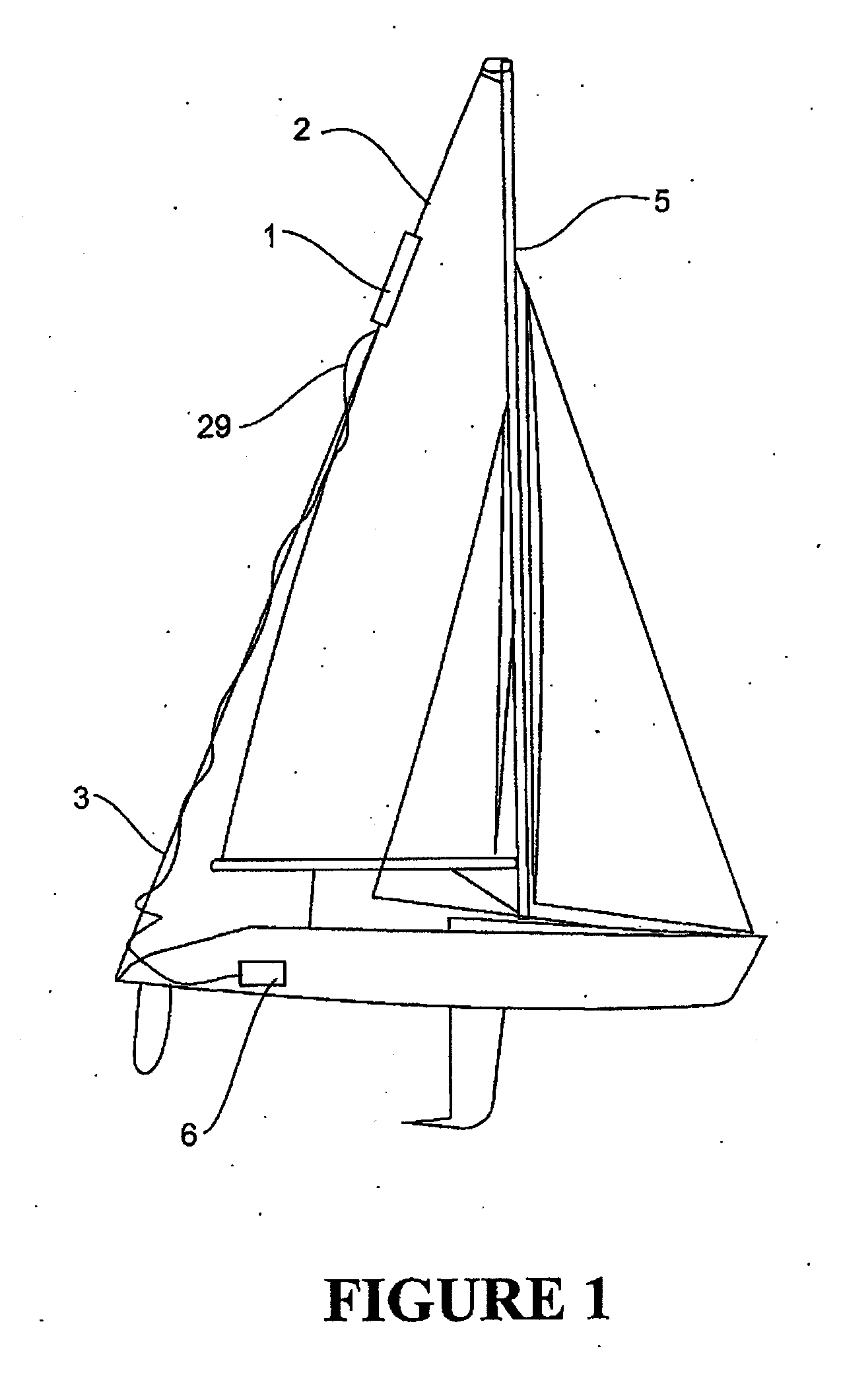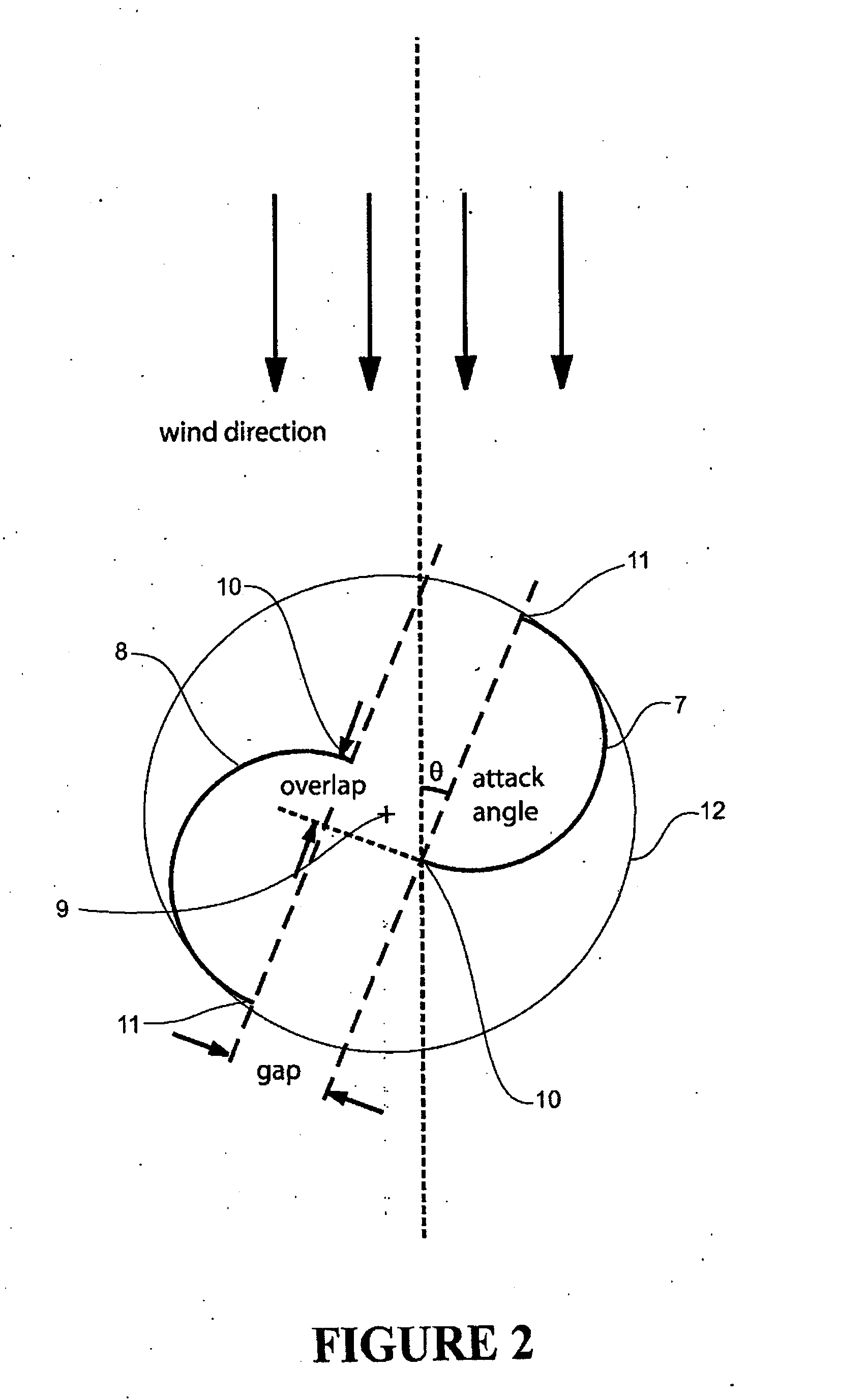Power Generator
- Summary
- Abstract
- Description
- Claims
- Application Information
AI Technical Summary
Benefits of technology
Problems solved by technology
Method used
Image
Examples
first embodiment
[0111]With reference in particular to FIG. 1, a turbine apparatus 1 according to the present invention is shown. The turbine apparatus is portable (in that it is small, lightweight and easily moved from one place to another) and has an elongated shape including a part which rotates about a longitudinal axis in response to movement of a fluid such as water or more preferably wind. The turbine apparatus is therefore of the type generally referred to as a longitudinal or vertical axis wind turbine. As will be explained below, it is thought to be particularly advantageous to mount turbine 1 flexibly or non-rigidly such as by attaching the longitudinal ends to cables or ropes 2,3 which are slightly tensioned. As will be explained below, the turbine could be attached around a single cable or rope.
[0112]A use of the turbine 1 is in the generation of electricity to power consumer electronic devices having relatively low power requirements. As seen in FIG. 1, it is anticipated that the turbi...
second embodiment
[0135]FIGS. 9A-14B show the invention. This embodiment of the invention is similar to that described in relation to FIGS. 1-8 and can be used in the same manner, although there are some differences in the generator arrangement. As can be seen in FIGS. 9A-9C the general shape of the main rotor is the same as that described in relation to FIGS. 3A-3B. As can be seen in FIG. 9C, cross-sections A and C of the rotor 13 are shown with the bridging sections 17. In FIG. 9C, the bridging sections are shown abutting each other indicating the actual manner in at which the two blade sections will be arranged. As noted earlier in relation to FIG. 3C, the bridging sections are shown in a spaced apart arrangement. FIG. 9C also shows the rotor 90 and armature 91 of the generator 92 that are housed in the bottom bulb 23 of the main rotor 13. FIG. 10A shows the generator 92 in more detail.
[0136]Only the differences, which relate to the generator 92, will be described here. All other aspects of the se...
PUM
| Property | Measurement | Unit |
|---|---|---|
| Length | aaaaa | aaaaa |
| Angle | aaaaa | aaaaa |
| Power | aaaaa | aaaaa |
Abstract
Description
Claims
Application Information
 Login to View More
Login to View More - R&D
- Intellectual Property
- Life Sciences
- Materials
- Tech Scout
- Unparalleled Data Quality
- Higher Quality Content
- 60% Fewer Hallucinations
Browse by: Latest US Patents, China's latest patents, Technical Efficacy Thesaurus, Application Domain, Technology Topic, Popular Technical Reports.
© 2025 PatSnap. All rights reserved.Legal|Privacy policy|Modern Slavery Act Transparency Statement|Sitemap|About US| Contact US: help@patsnap.com



